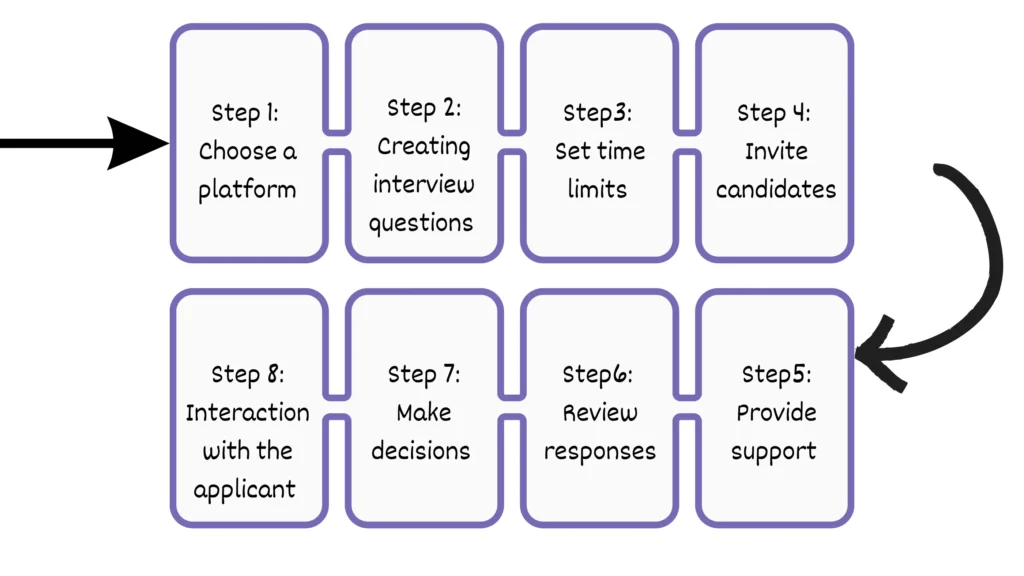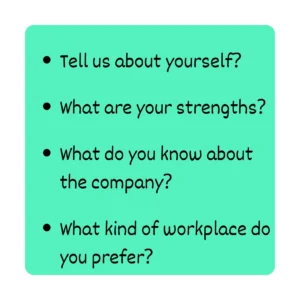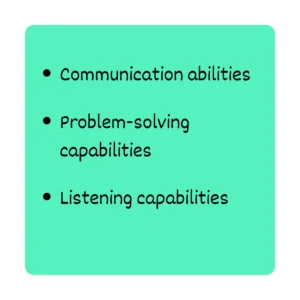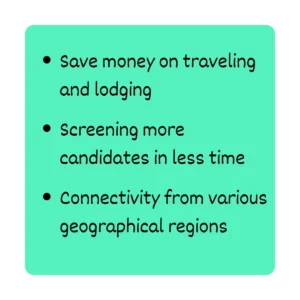
The Rise of Automated Video Interviews in Hiring
In today’s fast-paced recruitment environment, technology is actively transforming how organizations find and work with top talent. One inventive instrument becoming increasingly commonplace is the automated video interview. This blog examines how automated video interviews can revolutionize contemporary hiring procedures. The future lies in video interviews. Businesses can save money and time by conducting interviews online using asynchronous or live video interviewing software. This also spares the recruiter and candidates the logistical headache of organizing and traveling.
What is an Automated Video Interview?
In an automated video interview, candidates use a video interviewing tool or an internet platform to record their answers to pre-arranged interview questions. In contrast to more conventional in-person or live video interviews, automated video interviews are asynchronous, allowing candidates to record their answers while recruiters can watch the recordings whenever it’s convenient for them.
Candidates usually receive questions via text prompts or pre-recorded questions from the hiring organization during an automated video interview. Candidates will then, usually within a time limit, record their answers to each question. Upon completion of the recording, candidates send in their responses via the platform so recruiters can review and assess them.
There are many advantages to automated video interviews for recruiters and candidates. They offer candidates convenience and flexibility, letting them finish the interview at a time and location that work best for them. Additionally, candidates can use videos to highlight their personality and communication abilities, which can help them stand out during the recruiting process.
Recruiters may analyze candidate responses more quickly thanks to automated video interviews, which expedite the screening process. Based on their video responses, recruiters may evaluate candidates’ qualifications, communication skills, and cultural fit, which enables them to make more informed decisions about which candidates to forward in the hiring process.
Also Read: Live Video Interview Guide
How is a One-Way Automated Video Interview Set Up?

The following steps are typically included in the process:
1. Choose a Platform
The usual method for organizing an automated one-way video interview is to use software or an online platform made especially for that purpose. The user interface, functionality, cost, and customer support are all important considerations when choosing a platform for one-way automated interviews. Think about your unique requirements and preferences when selecting a platform, as well as the vendor’s degree of support and training. Before deciding, make sure the platform fulfills your needs by testing it out and taking advantage of available free trials or demos. One such example is Ducknowl.
2. Creating Interview Questions and Setting Up an Interview
Examine the job description to determine the essential abilities, credentials, and qualities needed for the position. This will assist you in customizing interview questions to evaluate candidates’ fit for the role. Create a list of interview questions that address technical proficiency, behavioral abilities, and cultural fit, among other areas of the job. Ask situational and open-ended questions in combination to get in-depth answers from applicants. Tailor your interview questions to the qualifications, background, and experience of each candidate. To better understand a candidate’s response and learn more about their capabilities, pose insightful questions.
Work together with the hiring team and candidates to arrange times for interviews that work for everyone. Give precise directions and information on the length, format, and any technological needs of the interview.

3. Set Time Limits
It’s crucial to find a balance between giving candidates enough time to give thoughtful answers and making sure the interview stays on topic and runs well when establishing time restrictions for interviews. Consider the intricacy of the questions posed and the degree of specificity anticipated in the answers from the candidates. Longer response durations may be necessary for more complicated questions to give candidates the time to thoroughly express their ideas.
Communicate the time limits to candidates at the beginning of the interview so they know how much time they have to respond to each question. Change the time restrictions according to the question type. Technical questions, on the other hand, might have a shorter response time requirement to evaluate applicants’ capacity to think rapidly and solve problems under pressure, while behavioral or situational questions might require a longer response time to allow candidates to provide specific examples.
4. Invite Candidates
One of the most important steps in the hiring process is inviting prospects to interviews. Make the invitation as unique as you can and address the candidate by name. This displays your respect for their candidacy and shows that you have given their application some thought. Provide all pertinent information about the interview, such as the date, time, and place (if any). Give directions on how to access the conference call or interview platform if it’s a virtual interview. Give candidates the interviewer’s or recruiter’s contact information in case they have any questions or need to reschedule. Urge candidates to get in touch if they require any help or explanations.
5. Provide Support
Supporting applicants during the interview process is crucial to making sure they have a good experience and assisting them in giving their best. Explain the interview procedure in detail, along with any guidelines or prerequisites. Give instructions on how to use the interview platform, what to expect at the interview, and any useful resources or preparatory materials. Provide candidates with technical support so they may use the interview platform and take part in the interview without any problems. If necessary, offer troubleshooting advice or contact details for technical support.
6. Review Responses
Examining the interviewee’s responses is an essential part of determining the candidate’s suitability for the position and their qualifications. If the interview was performed via a video platform, view the recordings of the applicants’ answers. Take note of their ability to communicate, their coherence, and the way they show themselves. Examine applicants’ answers in light of the position’s requirements and preset standards. Examine the extent to which candidates exhibit the necessary knowledge, expertise, and abilities.
7. Make Decisions
Selecting which applicants to advance in the hiring process is a crucial decision that requires significant thought and assessment. Examine candidates’ answers to exercises, tests, and interview questions to determine their suitability for the position and their qualifications. Take into account elements including technical proficiency, communication skills, relevant experience, and organizational culture fit. To determine which candidates are the strongest candidates for the job, compare their qualifications, strengths, and flaws. Take into account each candidate’s compatibility with the position’s needs and the recruiting team’s priorities.
8. Communication With Candidates
It’s critical to give candidates updates on selection decisions in a timely, courteous, and straightforward manner. Whether the candidate has been chosen for the post, the selection process results should be communicated clearly and concisely. The hiring staff chooses candidates who perform well and are worthy of further consideration based on the automated interview evaluation. These applicants might move on to the next round of the employment process or be invited back for follow-up interviews, like in-person meetings or live video interviews.
Benefits of Automated Video Interviews
In the hiring process, automated video interviews provide the following significant benefits:
1. Efficiency
One major benefit of automated video interviews in the hiring process is their efficiency. Recruiters can evaluate candidates’ responses at their convenience via automated video interviews, which eliminates the need to coordinate schedules and cuts down on the amount of time spent on preliminary screenings. Recruiters can evaluate several applicants quickly in comparison to more traditional interview techniques. Candidates can finish automated video interviews remotely and at their speed, which cuts down on the amount of time it takes to advance candidates through the screening process.
Conventional interviews frequently involve candidates and interviewers planning their calendars, which can be laborious and prone to scheduling difficulties. By enabling candidates to finish their interviews asynchronously, automated video interviews remove these issues and produce a more efficient hiring process.
2. Flexibility
Automated video interviews provide candidates with the convenience of conducting interviews at a time and location of their choosing. The most comfortable setting is up to the candidate, which can include their home, a peaceful office, or being on the go. Candidate experiences are improved because of this flexibility, which removes the need for candidates to reschedule their interviews or take time off of work. Recruiters can effectively assess prospects without requiring a lot of planning or scheduling thanks to automated video interviews, which streamline the interview process. In addition to expediting the employment process, this saves time for recruiters and candidates.

3. Standardization
The practice of creating uniformity and consistency in the hiring process is called standardization. In automated video interviews, standardization refers to giving each candidate the same questions and evaluation standards. Recruiters may guarantee that all candidates are assessed according to the same standards by utilizing standardized questions and evaluation criteria. Doing this makes the interview process less variable and all candidates are guaranteed parity and fairness. Standardized interviews yield consistent and dependable outcomes for every applicant, which facilitates recruiters’ evaluation of candidates’ qualifications and helps them make well-informed recruiting decisions. By using standard criteria, recruiters can safely compare candidates’ responses and pinpoint top achievers.
4. Streamlined Collaboration
The hiring team can work together smoothly with the features that automated video interview platforms frequently include. Recruiters can expedite the decision-making process by exchanging interview records, offering feedback, and talking about candidates’ performance on a centralized platform.
5. Candidate Experience
Candidates can do automated video interviews at their own pace and from any location with an internet connection, giving them flexibility and convenience. In addition to improving the applicant experience, this can strengthen employer branding.
6. Assessment of Soft Skills
Recruiters can evaluate candidates’ verbal communication abilities, including fluency, articulation, and intelligibility, through automated video interviews. Recruiters can assess a candidate’s ability to clearly and concisely communicate their ideas and convey information. Video interviews shed light on applicants’ presentation abilities, particularly their capacity to hold the attention of a crowd. Recruiters can assess a candidate’s professionalism, composure, and confidence in their answers. Candidates’ listening abilities, such as their capacity to actively listen, understand questions, and reply correctly, can also be assessed during video interviews. Employers can evaluate applicants based on their capacity for comprehension and analysis, follow up with clarifying queries, and hold productive conversations.

7. Global Reach
Candidates can take part in the hiring process remotely from any location with an internet connection by using automated video interviews. Geographical restrictions are removed, giving recruiters access to talent from underserved or remote places where traditional recruitment techniques could be less successful. Recruiters may effectively screen a large number of prospects for several vacancies at once by reaching out to candidates worldwide. This scalability shortens the hiring period and saves time and money when it comes to international recruitment.
8. Scalability
Recruiters save time with automated video interviews since the process is streamlined and manual duties like scheduling and coordinating are eliminated. Instead of being bogged down by administrative work, recruiters can now concentrate their time on speaking with exceptional applicants and making well-informed recruiting decisions. Organizations may need more recruits as they develop and flourish. Whether scaling up to manage a sudden flood of applications or scaling down during slower periods, automated video interviews offer a scalable solution that can readily react to shifting recruitment demands.
9. Data-Driven Decision-Making
Platforms for automated video interviews gather information on a range of performance metrics from candidates, including body language, speech pace, response length, and facial expressions. Recruiters can learn more about candidates’ engagement during the interview, communication abilities, and confidence levels by examining these measures. A lot of automated video interview platforms come with built-in assessment tools that let hiring managers rate applicants according to pre-established standards or scoring guidelines. These evaluation results provide recruiters with an objective means of comparing prospects and enable them to make data-driven judgments regarding which candidates move on to the next phase of the hiring process.
10. Cost-Effectiveness
Candidates and recruiters can save a lot of money on trip expenses like lodging, meals, and transportation by using automated video interviews instead of in-person interviews. Automated video interviews reduce travel time and streamline administrative work, which benefits recruiters and candidates alike. Recruiters may spend more time engaging with top applicants and making well-informed hiring decisions by screening more candidates in less time. Recruiters can connect with prospects from a variety of geographic regions through automated video interviews, eliminating the need for lengthy travel or relocation. This increases the pool of available talent and lessens the need for pricey relocation packages or other inducements to entice applicants from other areas.

11. Initial Screening
Before inviting candidates for in-person interviews, automated video interviews are frequently utilized as a screening technique to evaluate their qualifications, interpersonal abilities, and cultural fit. This shortens the time spent on unqualified prospects by recruiters and aids in the identification of top candidates more quickly.
12. Remote Recruiting
By enabling recruiters to evaluate prospects remotely without requiring in-person meetings, automated video interviews facilitate remote recruiting. This is particularly helpful for companies that have dispersed teams or are hiring individuals from several regions.
13. High-Volume Recruitment
Because automated video interviews are scalable, they are perfect for situations in which recruiters must swiftly and effectively screen a large number of candidates. This could involve hiring for entry-level jobs, seasonal positions, or large-scale recruitment drives.
14. Effective Onboarding
Automated video interviews can occasionally be employed in the onboarding process to acquaint new personnel with the firm, team members, and culture. This makes new hires feel better equipped and a part of the team right away.
Conclusion
To sum up, the emergence of automated video interviews signifies a noteworthy progression in the recruitment procedure, providing an abundance of advantages to both employers and applicants. These technological developments have revolutionized traditional recruitment techniques by changing how firms find, evaluate, and choose top talent. Additionally, recruiters may reach prospects anywhere in the world, get around geographic constraints, and manage large applicant quantities effectively with automated video interviews. Because of its scalability and accessibility, businesses may create more dynamic and robust teams, thereby advancing diversity and inclusion objectives.





